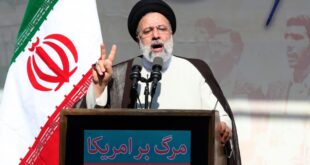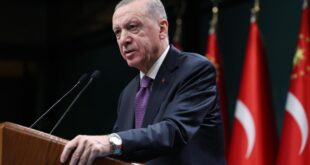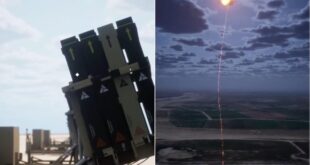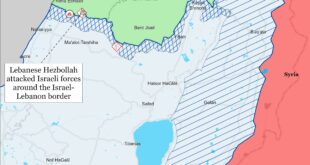Riyadh refused Washington’s pressure to increase oil production, then faced blistering attacks on its oil facilities and infrastructure from Yemen. Under increasing pressure to end its siege on Yemen, what will the Saudis do?
Overshadowed by events in Ukraine and elsewhere, the devastating war in Yemen is now in its seventh year. However, increasingly strategic attacks by the Yemeni resistance movement Ansarallah – combined with the oil production standoff between Washington and Riyadh – may bring Yemen into the spotlight again and highlight its bitter fight to lift the siege.
Besieged Yemen
From the start of the Saudi/UAE-led aggression against Yemen in March 2015, a strict land, air, and sea siege was imposed on the poorest country in West Asia. In the early stages of the war, the Yemeni resistance movement Ansarallah did not possess either the military experience or political acumen to counter the aerial aggression, and lost strategic areas from Marib in the east to Hodeidah in the west.
But within two years, Ansarallah became capable of not only repelling the Saudi-Emirati advances, but proactively counter attacking sites captured by the foreign coalition. After developing more sophisticated missile and drone capabilities, the Ansarallah-aligned military also began carrying out missile and drone operations across the border, deep into Saudi Arabia.
Perhaps the most prominent of these operations was the ‘Balance of Deterrence’ operation, claimed by Ansarallah in 2019, which left Aramco’s (Arabian-American Oil Company) tanks burning. The goal of that operation lay in its name: Balance of Deterrence, meaning deterring the aggression and the bombing of the capital city, Sanaa.
Indeed, following the eighth phase of the operation in October 2021, the rate of air raids on Sanaa decreased from dozens of sorties a day to almost zero. Nevertheless, the suffering of the Yemeni people continued because the deadliest tactic employed by the coalition was not those air raids, but its siege warfare.
Hitting the Saudis where it hurts
Crucially, since Ansarallah’s latest operation on Friday, targeting Saudi energy facilities amid the hosting of the prestigious Grand Prix in Jeddah, the whole world could potentially be impacted.
The scarcity of oil derivatives and the rise in their prices globally due to the Ukrainian conflict, in addition to the delay of recapturing the city of Marib, pushed Ansarallah to adopt a new phase of retaliation against the Saudi aggression, in an operation dubbed ‘Breaking the Siege’. The first operation began on 10 March, the second on 20 March, and the third on 25 March.
While it is not the first time Aramco facilities or Saudi military bases have been attacked, what is remarkable about these new operations is that desalination and energy facilities have been targeted for the first time since the start of the aggression. The timing is also interesting, as global markets are facing record-high prices due to the war taking place in Ukraine between Russia and the west.
These desalination plants are essential for Saudi Arabia, as 50 percent of the kingdom’s drinking water comes from these facilities, and Saudi Arabia, at the forefront of countries in this field, produces a quarter of the world’s brine.
Recognizing the potential game-changing implications, Ansarallah remains firm on continuing these operations until the siege of Yemen is lifted.
Yemeni Army Spokesman Brigadier General Yahya Saree announced after the second operation that “the armed forces warn the criminal enemy of the consequences of the continuation of the brutal siege on its facilities and economic projects,” and stated after the third operation that they “will carry out more qualitative strikes within the bank of objectives to break the siege. The armed forces will not hesitate to expand their military operations until the aggression stops and the siege is lifted.”
Ansarallah movement spokesman Muhammad Al-Bukhaiti, in an interview with Al-Mayadeen, concurred: “We are very serious about the strikes on Saudi Arabia and the strikes will escalate, especially on Aramco facilities.” He warned that “we now have large numbers of missiles and cruises missiles,” and explained the tactical benefits of continuing operations now: “Yemen should benefit from the ongoing conflict in Ukraine to further pressure the Saudis to lift the siege.”
It’s bigger than Ukraine
In the aftermath of the 21 March attacks, Saudi Arabia announced that “we won’t bear responsibility for any shortage in oil supplies to global markets.” Following the statement, global oil market prices increased by five to six percent.
The International Energy Agency (IEA) warned on 24 March that “the world may well be facing its biggest oil supply shock in decades” as a result of the Ukrainian conflict.
In addition, many experts have stated that oil prices might surge up to $200 a barrel and could push the global economy into a widespread recession.
But these experts and IEA warnings failed to calculate the ‘forgotten war’ on Yemen and Ansarallah’s determination to continue – even escalate – the targeting of sensitive Saudi energy sites such as Aramco, the largest exporter of crude oil in the world at nearly 12 million barrels per day.
Saudi Arabia is vulnerable
Following the attacks, the Yemeni President Mahdi al-Mashat announced on 26 March a three-day ceasefire accompanied by a peace initiative. The head of the National Delegation, Mohammad Abdulsalam, summed up the initiative in a tweet stating: “The Saudi regime must prove its seriousness towards peace by positively dealing with the Yemeni peace initiative announced by President Al-Mashat, by responding to a ceasefire, lifting the siege, and removing foreign forces from our country … Only then will peace come and it will be a good time to talk about political solutions, away from any military or humanitarian pressure.”
Knowing that Ansarallah will reject any treaty or negotiations that exclude the lifting of the siege, the Saudi-led coalition announced on 30 March a temporary halt to military operations, in a maneuver that allows the Saudis to buy time, present themselves as the good guys, and blame the eventual ceasefire failure on Ansarallah.
The response from Ansarallah came within a few hours through their spokesman, Al-Bukhaiti, who tweeted: “If the siege is not lifted, the declaration to stop the military operations will be meaningless because the suffering of Yemenis is a direct result of the siege, which means the continuation of our military operations.”
At present, Saudi Arabia is in a difficult position, caught between two fires, so to speak. First, by Ansarallah’s debilitating retaliatory attacks, and second, by the political repercussions of its already strained relations with Washington, marred by Riyadh’s repeated rejections of US pleas to increase oil production and drive down oil prices – which it can ill afford to do.
As such, the strikes on Aramco and vital facilities have grave internal and external repercussions.
Internally, Saudi Arabia has been relieved by global oil prices hikes and has hoped to benefit by reducing its accumulated debts from the Yemen war and to reduce the 15 percent VAT that was implemented in 2020 – a highly unpopular tax that led to an increase in living prices for Saudi citizens.
But the severity of Ansarallah’s recent operations targeting Saudi oil facilities could reverse any gains Riyadh was counting on. Furthermore, Crown Prince Mohammed bin Salman’s (MbS) 2030 vision of attracting foreign investment and portraying Saudi Arabia as a safe, progressive country with a promising future will quite literally go up in smoke.
Externally, Riyadh was facing tough demands from its western allies even prior to the strikes – that pressure will be even greater today. These demands will now not only be restricted to increasing oil production to meet the decline in Russian energy supplies, but also to lifting the crippling siege on Yemen as the world cannot bear further hikes in oil prices.
In the past, Saudis have generally raised their oil production in compliance with Washington’s demands. During the former Soviet Union’s military operations in Afghanistan, Saudi Arabia flooded energy markets, which dropped the per barrel price of oil to $10 and debilitated the Soviet economy. Likewise, the Saudis increased oil production during the Gulf War in 1991 and the illegal 2003 invasion of Iraq. Saudi airbases and territorial waters were also used to launch strikes that destroyed and tore Iraq apart.
This conformity did not come for free. In return, the United States has supported and even protected the Saudi regime for decades. Over the years, the US sold the Saudis various types of weapons and held dozens of joint naval, land, and air maneuvers with the kingdom. In addition, Washington has overlooked the repressive and criminal measures practiced for generations against Saudi citizens, and its military interventions in Bahrain and Yemen.
The leverage the Saudis have long enjoyed may swiftly end if Mohammad bin Salman does not obey Washington during this critical juncture in the latter’s global standoff with Russia and other rising powers. In an attempt to ease the tensions between the two countries, last month, the Biden administration agreed to transfer Patriot missile defense systems back to the Saudis – having removed them only last year – to fulfil an “urgent request” due to growing security threats posed by the Yemeni armed forces.
Why the siege must end
War aside, the economic siege was and still is the gravest threat to the Yemeni people, and pressure to lift it is mounting, not least because the military conflict in Ukraine is showcasing the west’s stark hypocrisy over humanitarian crises in white and non-white states.
The blockade has prevented raw materials, medicine, and oil derivatives from reaching Yemen, suffocating its citizens and contributing to the worst humanitarian crisis in the world.
Importing oil derivatives to the war-torn country is not easy. Previously, oil fields in Marib and Shabwa fed Yemen and exported quantities through the port of Hodeidah and several ports on the southern coast. This all came to an abrupt halt once the Saudi-led coalition controlled energy-rich Marib, stopped pumping oil to the port of Hodeidah, and continued to pump oil in the south to benefit from its revenues – an estimated $20 billion since the beginning of the crisis.
The Saudi-led coalition left the Sanaa-based, de facto Yemeni government with only one humiliating choice to obtain oil derivatives:
First, Yemenis are forced to purchase oil through an intermediary or a private company from UAE markets and paid via UAE banks (the UAE has led the war alongside Saudi Arabia and has focused its attention on colonizing Yemen’s south).
Second, the oil is examined by a French company to determine its source. Third, the ship sails to Djibouti to be checked by the “UN Verification and Inspection Mechanism for Yemen” (UNVIM). And fourth, the ship sails to Jizan, Saudi Arabia, to be examined by Saudi Arabia.
These arbitrary procedures require months and sometimes years to complete. Currently, four oil tankers are held by the coalition aggressors in the Red Sea. These tankers belong to the Sanaa government and the Yemeni people, but are prohibited from entering the port of Hodeidah, despite the scarcity of vital energy needs and its resulting humanitarian catastrophe.
It is a difficult corner that Riyadh has been painted into. By defying the west, Saudi Arabia will likely face some sort of punitive consequence, and by maintaining the siege it will face more strikes on its vital facilities by Ansarallah.
The siege could and should be lifted if MbS wants to stay in power, even if it means accelerating the impending and humbling defeat to “the Houthis,” who the crown prince believed, once upon a time, he could defeat in a few days.
 Eurasia Press & News
Eurasia Press & News




